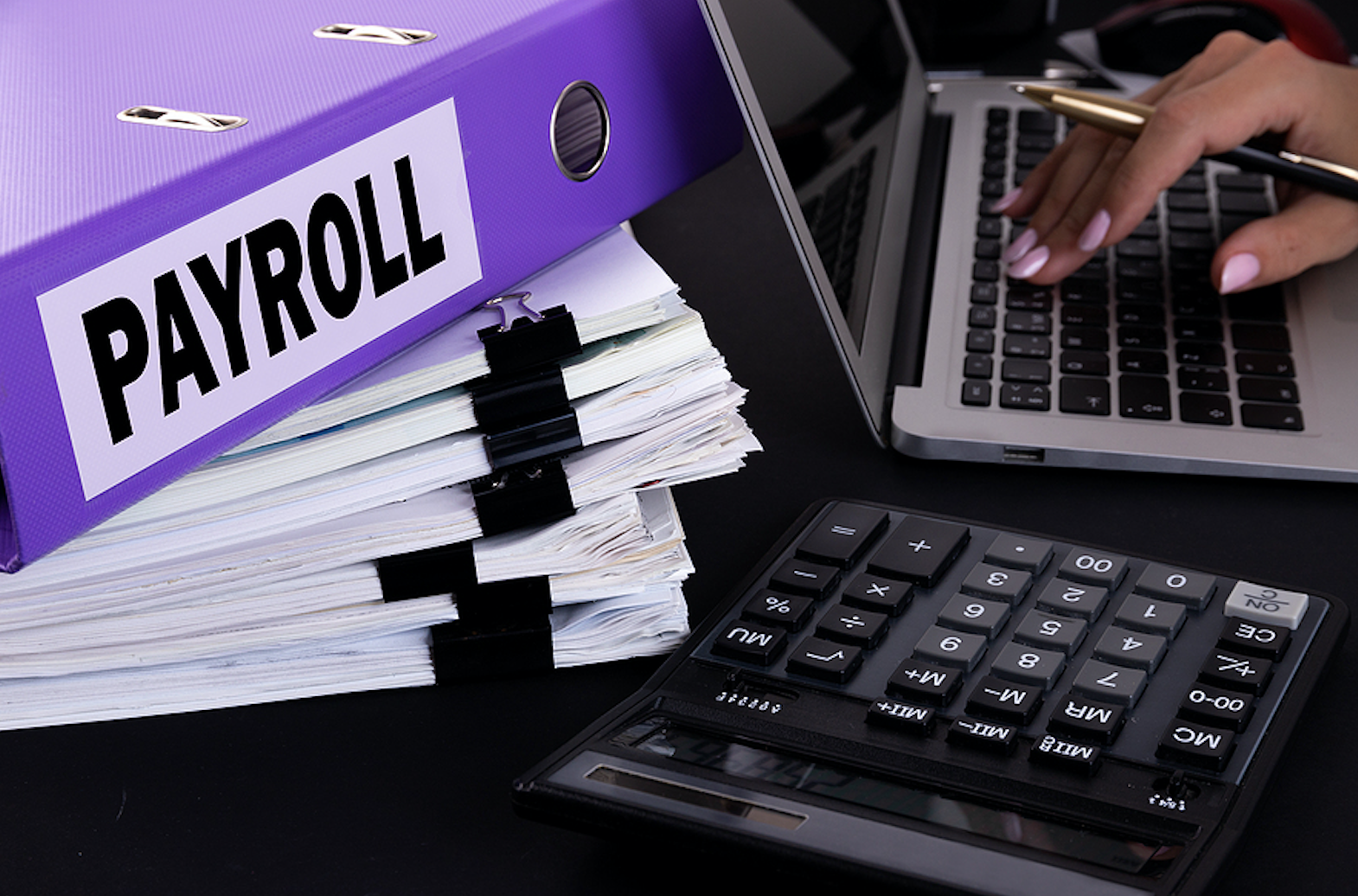How to Do Your Own Payroll in 7 Simple Steps?
by 21/10/2020 17:300

Most companies and enterprises prefer having a payroll system and working with an accountant for processing payroll. The process can be tedious, with several tax-related and administrative responsibilities coming into play. Although it is recommended to invest in an automated payroll system, some small businesses still prefer doing their own payroll. However, if you are not a Chartered Accountant or a tax law expert, you can come across several IRS issues.
Following is a 7-step guide to process your own payroll successfully and effortlessly.
1. Get your Employer Identification Number
The primary step towards processing your own payroll is to determine the following:
- Employee Identification Number (EIN)
- State and local tax IDs
The government will use these identifications to inspect your business to make sure you are compliant with the guidelines and requirements. If you don’t have an EIN, you can apply for one from the IRS website.
2. Determine a payroll schedule
The next step is to decide on a payroll schedule. Here are some standard payroll frequencies in the US.
- Monthly
- Semi-monthly
- Weekly
- Bi-weekly
Different states have different laws regarding minimum frequency for paying to your employees. But, the schedule you decide, in addition to being compliant with the state regulations, should also align with the needs and preferences of your employees.
3. Collect employee information
Once you’ve set up the schedule, it’s time to make your employees fill out IRS Form W-4, also referred to as the Employee’s Withholding Certificate. This form provides you with the relevant employee tax information, such as how much amount in the form of taxes you need to conceal from each employee’s paycheck, depending upon their income, marital status, and other factors. After W-4, you will need to calculate every employee’s deducting amount
4. Calculate the gross pay
Since you are all set with payroll schedule and employee tax information, you can start processing your own payroll. To do this, you will need to calculate the gross and net pay of the employees.
Gross pay is the money amount an employee earns, excluding other deductions and taxes. The calculation of gross pay for employees depends on their salary.
$35,568 a year or more
For employees that earn $35,568 a year or more, the math is rather simple. All you need to do is divide the annual salary by the number of pay periods each year.
Less than $35,568
For employees earning less than $35,568, the math gets a bit complex as you have to pay them overtime if they work for more than 40 hours per week. To calculate the overtime rate of an employee, you will need to divide the annual salary by 52 to get the weekly rate, and then by 40 to get the hourly rate. Multiply the hourly rate with 1.5 and you will get the overtime rate. Now, multiply this rate with the number of extra hours worked and add it to the gross pay.
5. Calculate net pay and pay your employees
Net pay refers to the amount of money an employee takes home to post all tax and other deductions. To control the net pay, start with subtracting any pre-tax deductions from the gross salary, such as health insurance, commuter benefits, etc. After sorting pre-tax deductions, deduct the amount you are concealing for taxes.
Lastly, see if there are any credits and post-tax deductions. You can gather this information from your workers’ W-4 forms, benefits requirements, and federal & state requirements. Each state, however, has different taxes, and you will need to research your state’s tax policies.
Once you get the net pay of all employees, pick the method of you and your employees’ choice – direct deposits, paper checks, or cash – and pay your employees as per your payroll schedule. You might need to provide your employees with a pay stub as well that breaks down all the deductions. Irrespective of the state of your business, be sure to have a detailed record of all paychecks.
6. Pay and report payroll taxes
Let’s come to the most substantial and arguably the most complicated part: paying the payroll taxes.
When to pay payroll taxes?
The frequency of your payroll taxes will depend upon your lookback period, which depends on whether you use Employer’s Quarterly Federal Tax Return (Form 941) or Employer’s Annual Federal Tax Return (Form 944).
Now, if your payroll taxes during the lookback period were $50,000 or less, you’ll have to pay payroll taxes on the 15th day of every month. If the amount is more than $50,000, you pay payroll taxes semiweekly. If you have a tax obligation amount of more than $100,000, you’ll need to deposit payroll taxes the next day for the next and the following year.
How to calculate the amount you owe in payroll taxes?
Here’s how you can calculate your dues
- The amount you concealed from your employee’s pay for federal, state, county, or city income taxes
- The amount you withheld for Medicare and Social Security
- The amount you owe in federal unemployment and state unemployment taxes.
How to pay payroll taxes?
Once you know how much you owe, you can simply visit the Electronic Federal Tax Payment System (EFTPS) and the website (particular for every state, county, and city), and deposit the taxes.
7. Report the payroll taxes
Lastly, you will need to report your payroll tax payments to the IRS. For Form 940, it is due by January 31 of the previous year, whereas, for Form 941, it is due the last day of every quarter.
Some other considerations to keep in mind
As discussed before, don’t forget to keep records of transactions for compliance and tax purposes. If there is a payment dispute from the employee’s end, or the IRS asks for some documentation in the future, you should be ready with the records. When employees dispute a payroll, well-maintained records come in handy to sort out any issues that arise.
Besides, keep a note that you have to file taxes of your business on an annual or quarterly basis. It is also crucial to understand how your payroll taxes fit into the operational aspects. Lastly, remember to report any new hires you make.
Why should you use payroll services?
Needless to say, managing your own payroll is a tormenting process. From calculating gross & net pay to calculating taxes to paying salaries to deposit and reporting taxes, it is a lengthy, cumbersome procedure that is prone to several manual errors and compliance issues. Not only will it make your employees frown upon you, but it may lead to legal hurdles as well.
Here are some benefits of delegating your payroll functions.
Save money and time
As a business grows, the size of its workforce increases. If you have a total of 15 employees, managing your own payroll might seem easy, but as this number rises to 50 or more, payroll management will become more complex and time-consuming. You’ll need to spend days calculating gross pays, net pays, tax returns, etc. And if you make any mistake in tax returns or employee payrolls, you might end up facing legal issues, which will further eat up your time and resources. Therefore, it is better to either hire a dedicated team for payroll or outsource it.
Flexibility and efficiency
Payroll might not be the most productive element – in fact, it does not provide direct value at all – but it is a pivotal aspect to every business. If you don’t pay your employees on time, they will not remain your employees. And, if you don’t pay taxes properly, your business might face the wrath of federal and state laws.
Outsourcing or in-house payroll team: Which one is better?
For a small business that has just started out, hiring a small in-house payroll team and investing in a payroll management system is ideal. Payroll Outsourcing can come with high initial costs that a newly founded business might not be able to afford.
But as your business scales up and your team size increases, outsourcing your payroll services would be the best pick. Moreover, some payroll service providers also offer certain employee benefits that are inaccessible by a small business with an in-house payroll team.
Key benefits of outsourcing payroll services are:
- Saves time and money
- Avoids IRS Penalties
- Improves Tax Savings
- Reduces in-house payroll costs
- Eliminates Payroll Processing Errors
Final thoughts
New business owners might get tempted to perform their own payroll. Although it might turn out to be fruitful for a small business, you will eventually need a better, more flexible and accurate system to facilitate payrolls and tax returns.
Using payroll services can help increase the efficiency of your payroll, along with making you more compliant with the federal and state laws.
All in all, delegating payroll requirements to in-house teams or outsourced payroll services can be more rewarding and beneficial for your business.



